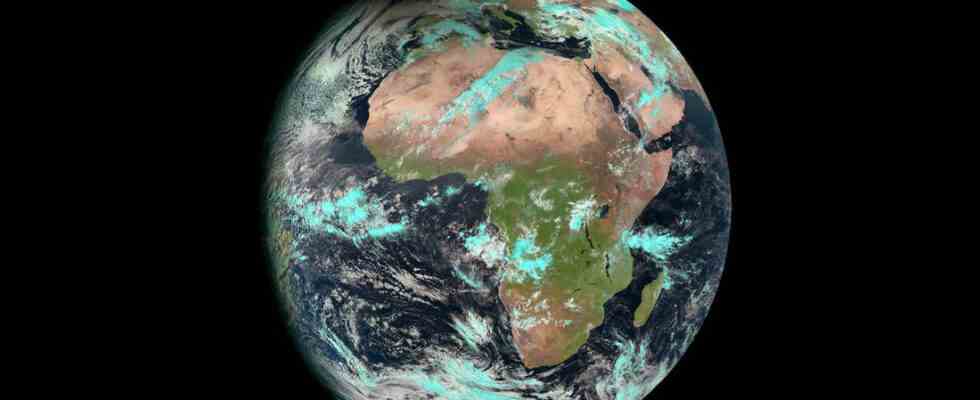A Chinese study shows that the Earth’s inner core has apparently stopped spinning. It should soon start to change its direction of rotation.
Beijing – Scientists who research the earth sometimes don’t have it easy. To study the interior of the earth, for example, they have to use seismic waves that move through the different layers of the earth during an earthquake.
From these observations we know that there is a solid core surrounded by a liquid outer core. The earth’s magnetic field is created in this liquid core, which protects the planet from radiation from space, for example.
the inner one earth core can move independently of the Earth’s rotation because it is surrounded by the liquid core. Thanks to decades of exploration of the Earth’s interior using seismic waves, researchers assume that the inner core of the Earth vibrates – sometimes it rotates one way, then the other. Now a study shows that in the journal NatureGeoscience released it became clear that the movement of the inner core of the earth has apparently stopped.
Surprising find: Earth’s core has apparently stopped rotating
The fact that the earth’s core has apparently stopped rotating is a surprising finding, agrees seismologist Jon Vidale, who was not involved in the study. Opposite the portal inverse he explains: “The interesting thing for me is that we see all the complexity here on the earth’s surface.”
Vidale continues: “Things changing down there seem to be bigger changes than what we see on the surface. So there might be some interesting things that we haven’t understood about this inner core boundary yet.”
Chinese researchers Yi Yang and Xiaodon Song from Beijing University looked at seismic data from the 1990s and 2000s for their study. She was interested in so-called seismic doublets – pairs of earthquakes that had almost the same magnitude in the same place at different times.
Space Newsletter
Subscribe to the free space newsletter and always stay up to date.
The researchers compared these pairs and found that in earthquakes between 1995 and 2008, the seismic waves differed significantly – between 2009 and 2020, however, there was a high degree of agreement in the pairs of earthquakes. The researchers concluded that the Earth’s inner core appeared to have stopped moving around 2009.
The inner core of the earth apparently changes direction every 30 years
After looking at seismic data from the 1960s and 1970s, the two researchers found that the Earth’s core appears to oscillate over a 70-year period, changing direction about every 30 years. The researchers’ thesis: the inner core rotated in one direction, paused and reversed until the early 1970s. This phenomenon is apparently happening again: the core of the earth stops and turns in the other direction.

According to researcher Song, the inner core of the Earth has been rotating eastwards since the early 1970s – faster than the Earth. Around 2009 this rotation paused and is now reversing its direction. “If the oscillation model is correct, we expect the inner core to rotate more slowly than the surface by the mid-2040s,” Song explains in an email to inverse.
The two researchers also found that the days on Earth shorten by 0.01 milliseconds when the Earth’s inner core rotates in a westerly direction. If, on the other hand, it moves to the east – the direction in which the earth also rotates – a day becomes 0.12 milliseconds longer, according to the two researchers in their study. In fact, research has found that the earth is spinning faster. (tab)

